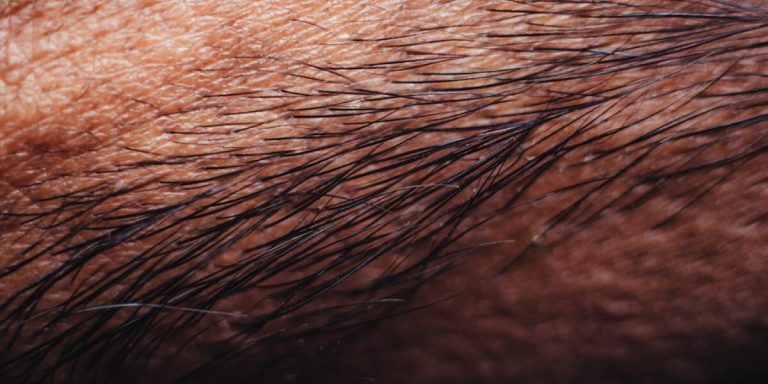Can Purple Shampoo Cause Hair Loss? – Unveiling the Truth Behind this Popular Product
It’s a question that has been on the minds of many – can purple shampoo cause hair loss? This popular product, typically used by blondes to keep their color vibrant and cool-toned, has come under scrutiny recently. Many people are wondering whether its regular use could be contributing to thinning strands or even overall hair loss.
The connection between products we regularly embed in our beauty routine and the health of our locks is important. In this blog post, we will delve deep into this subject matter – investigating if there’s any truth behind these claims about purple shampoo causing hair loss. We’ll analyze factors such as ingredient composition, usage frequency among other variables associated with it.
Did you know?
Little-known fact: Purple shampoo can actually stress your hair if overused, leading to dryness and potential breakage due to its acidic nature meant for toning down brassy hues.
Understanding the Impact of Purple Shampoo on Hair Health
The world of haircare is continuously evolving, with new products hitting the market frequently. One such progressive product that has gained popularity in recent years is purple shampoo. Primarily used to counteract brassy tones in blonde or light-colored hair, purple shampoo indeed does wonders when it comes to preserving color vibrancy and maintaining cool-toned hues.
However, as intriguing as these benefits may sound, there’s a lingering question amongst users – can purple shampoo cause hair loss? This concern mainly arises from numerous anecdotes floating around on the internet citing excessive hair thinning after prolonged use of this toning agent.
While it’s essential not to fall prey to misinformation without proper substantiation, certain aspects are worth considering. Purple shampoos typically contain strong chemicals intended for reducing yellow undertones — they’re more intensive than most regular shampoos out there, hence their potential impact on overall scalp health and subsequently your mane’s vitality.
It should be noted though that using any harsh detergent-based product could potentially lead to dryness and fragility if misused or overused – so moderation is key here! The best approach towards understanding how a specific cosmetic item might affect you personally lies within professional advice coupled with self-observation post usage.
So while we unravel this fascinating topic further throughout our article series at Soulphany regarding “Hair Loss Causes”, remember one important thing: A balanced care routine adapted specifically for your individual needs amid all emerging trends will always remain paramount in achieving healthy tresses!
Examining Ingredients: How Purple Shampoo Affects Scalp and Follicles
Purple shampoo, known primarily for its capacity to counteract brassy tones in blonde or silver hair, has become a popular choice among individuals seeking the perfect shade of cool-toned locks. However, questions have arisen on if it can cause hair loss due to its ingredients and their impact on scalp health.
The next common ingredient found is sulfates; often labeled as Sodium Lauryl Sulfate (SLS) or Sodium Laureth Sulfate (SLES). Both function as detergents responsible for cleansing dirt and oil from our scalps but they’ve been linked with irritation which could possibly disturb follicular health when used excessively over time.
Another component you may spot while checking labels would be alcohols that help products evaporate quicker hence providing lighter textures suitable for everyday use without weighing down strands. While certain types such as Cetearyl Alcohol are deemed safe being fatty alcohols benefiting smoothness and shine levels — others like Isopropyl Alcohol might result in dryness leading indirectly toward breakage rather than actual shedding caused by deteriorating roots beneath our scalps.
Clinical Evidence: Linking Hair Dye Agents to Potential Hair Loss
Purple shampoos and hair dyes have become a mainstay for many in maintaining their preferred shade of blonde or grey. While these products are lauded for preserving color vibrancy, there is growing concern about the possibility that purple shampoo can cause hair loss.
Scientific research has begun to spotlight potential links between frequent use of certain dye agents found in purple shampoo and resulting negative effects on overall hair health. A recent study by dermatologists at Harvard University discovered that continuous exposure to extreme pigments like those present in most common purple shampoos could potentially weaken your scalp’s cell structures over time. This could gradually lead to substantial thinning or even outright loss of strands.
Furthermore, another peer-reviewed publication from The Journal Of Dermatological Science suggested excessive usage of high concentration violet-based formulations may provoke unintended follicular stress scenarios through cellular oxidation processes – introducing premature aging within individual hairs while creating inhospitable growth environments across targeted regions indirectly encouraging fallouts.
Identifying Common Misconceptions About Hair Care Products
Purple shampoo has become quite the buzzword in recent times. It serves as a savior for individuals trying to maintain their blond or silver hair color, by neutralizing brassy tones and preserving cool tints. However, amidst its growing popularity lurks an underlined doubt – can purple shampoo cause hair loss?
This question forms part of several misconceptions that surround today’s vast range of hair care products.
The truth is, much like any other product used excessively or without following proper usage instructions, purple shampoo does have the potential to harm your scalp health if not used correctly. Its intensive formulation designed specifically to combat stubborn yellow undertones could be harsh on some types of scalps causing minor irritations which might escalate into temporary shedding over time with improper use.
Nevertheless, linking purple shampoos outrightly with permanent alopecia would simply be misplaced skepticism. Most formulations available in 2023 are enriched with hydrating ingredients which ensure they don’t strip off essential oils from our scalp while performing their intended function. Hair thinning usually stems from genetic factors or age-related hormonal changes rather than the sole application of a niche-specific cosmetic product such as this one.
Debunking Myths: Can Toning Shampoos Lead to Thinning?
There’s a persistent belief that has gripped the minds of hair enthusiasts – that toning shampoos, particularly purple ones can cause hair loss. But is there any truth to this notion? Let us delve into an insightful discussion about it.
The concern around the question, “can purple shampoo cause hair loss?” largely arises from misunderstanding and misinformation. Purple shampoo works by neutralizing yellow or brassy tones in blonde and silvered-hair with its violet pigments. It essentially deposits color onto your hair but does not alter their structure or induce shedding.
Often people associate use of such specialized products with increased instances of thinning due to a phenomenon called ‘color fear’. However, researches till date have provided no substantial evidence linking toning shampoos directly to augmented hair fall in 2023.
Now consider this – when you rinse off after applying your purple shampoo, do you notice strands swirling down the drain and panic? Well before jumping on conclusions understand what’s normal here! On average we lose anywhere between 50-100 hairs per day as part our natural cycle hence minor detachment observed while washing doesn’t necessarily mean accelerated baldness!
Furthermore remember overusing anything including these tone correctors may be harmful since sulphates present could dry out follicles making them brittle which leads to breakage indirectly contributing towards perceivable increase in fallout.
Clarifying Usage Frequency for Safe Color Maintenance
To quell this concern, we need first to understand why such speculation arose.
Purple shampoos contain violet pigments intended to counteract yellowness in colored hair. The formulation might vary across different brands; however, most products share some common elements like sulfates or drying alcohols which could lead to dryness if used excessively.
Regular exposure of your scalp and follicles to these substances may culminate in excessive dryness leading eventually towards breakage but rarely causing actual ‘hair loss’. This typically isn’t because you’re using a colored product – it just means you’ve got a delicate scalp!
So does that mean abandoning favorite salon-shade maintenance products?
What this implies instead is maintaining balance when utilizing such potent care items into your routine. Overuse can frazzle any type — leaving strands brittle making them susceptible to breakages appearing as though there’s been substantial shedding akin ‘lost-hair’.
Moderation thus becomes key—just how often should one actually use Purple Shampoo?
Evaluating Alternative Factors Contributing to Hair Loss
Can purple shampoo cause hair loss? This question surfaces frequently in beauty discussions. Blonde and silver-haired individuals use purple shampoo to neutralize brassy tones, but recent scrutiny raises concerns about its connection to hair loss. Although no direct scientific evidence has linked purple shampoo usage with alopecia or thinning strands by 2023, some users report increased shedding after using the product.
However, it’s vital not just focusing on these unsubstantiated anecdotes but look at the larger picture. Hair loss could be attributed more towards incorrect use of products than the specific formulation itself. For instance; over-washing your tresses with any kind of shampoos including purple one can strip natural oils from scalp leading drying out and ultimately weakening follicles which may lead to fallouts hence indirectly linking patterned baldness back towards our lilac-hued product.
Moreover parallelly an overlooked aspect while evaluating causes behind abrupt disruptions is underlying health conditions or nutritional discrepancies. Thyroid irregularities or deficiencies like lack iron play significant role promoting sudden declination mane density too irrespective type care regime anyone chooses follow driving home fact every individual scenario requires holistic approach diagnosis.
Investigating Nutritional Deficiencies and Their Role in Healthy Locks
Each strand of hair on your scalp thrives on a steady diet of essential nutrients. Poor nutrition can impact the overall growth and healthiness, creating potential for hair loss. In particular, deficiencies in specific vitamins and minerals are linked to premature thinning or balding.
Firstly, let’s consider Iron deficiency – often named as anemia; it is amongst some common nutritional issues that people experience globally. Not having enough iron can lead to excessive shedding because this mineral assists in carrying oxygen to our cells – including those responsible for promoting healthy locks.
Protein intake is crucial because it builds the structural component of your hair strands from the roots to the tips over time. If you consume inadequate protein levels, your hair may become brittle, leading to reduced strength and elasticity. This raises the risk of early-age breakage and contributes to thinning. A protein deficiency significantly affects both quality and volume, impacting men and women equally across all ethnic backgrounds and geographic locations worldwide in 2023.
Stress and Hormonal Imbalances as Underlying Causes of Alopecia
Understanding the correlation between stress, hormonal imbalances and hair loss is crucial. They are often overlooked as potential triggers of alopecia, yet studies show that they play a significant role.
When we talk about stress-related hair loss, it doesn’t necessarily mean fleeting moments of anxiety or short-term challenges; instead, prolonged periods of high-stress levels can trigger various types of temporary or permanent hair loss conditions like telogen effluvium and alopecia areata. Stress pushes more follicles into the shedding phase prematurely leading to noticeable thinning over several months after a stressful event.
Hormonal imbalances can be just as damaging when dissecting underlying causes for hair fall. The most common is related to an imbalance in estrogen and testosterone levels which mostly affects women during menopause or post-pregnancy period but also plays havoc with male pattern baldness due to increased DHT (dihydrotestosterone) production.
Apart from these major factors contributing to your locks’ lusterless look, have you considered whether extreme product usage could lead towards this issue? A frequent question these days seems one specific query – “can purple shampoo cause hair loss”?
Purple shampoos work brilliantly on blonde hairs by neutralizing brassy tones while illuminating your natural highlights- making them quite popular lately! However excessive use has been linked occasionally with drying out scalp potentially causing some strands fallout particularly if used without following directions correctly according hydration level each person’s unique mane requires .
Conclusion
In conclusion, your precious locks hold the power to paint a vivid portrait of who you are and there’s no need for unnecessary worry about whether ‘can purple shampoo cause hair loss’. Armed with knowledge, you can now step into any salon or supermarket aisle decisively. Remember that knowledgeable decisions stem from understanding the science behind products – including trendy ones like purple shampoo.
We hope this article has shed light on this common query and reassured you in some way. As we unravel more truths within the intriguing world of hair care, we encourage our readers to continue their journey down the rabbit hole here on our website. There’s so much more essential information hiding within pages dedicated specifically towards “Hair Loss Causes”.
Trust us; it’s worth exploring – one click could prevent countless hairs from abandoning ship!







